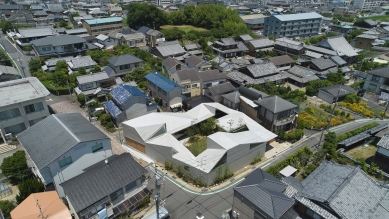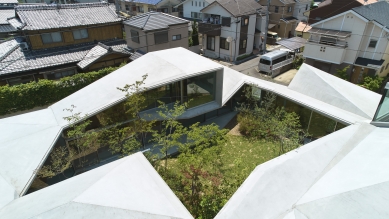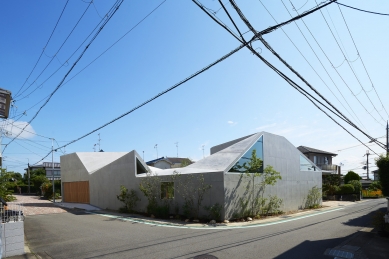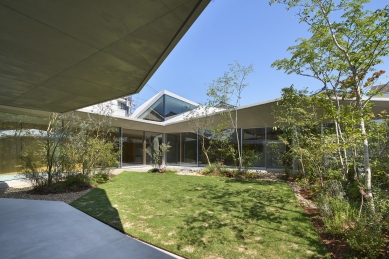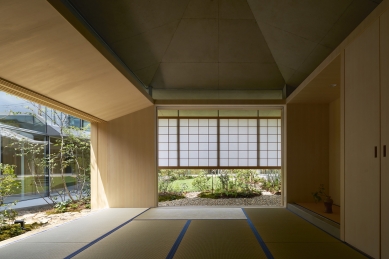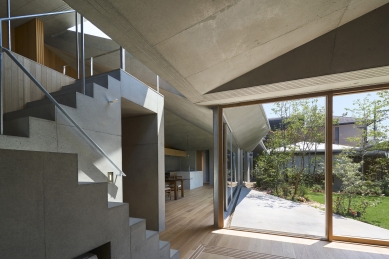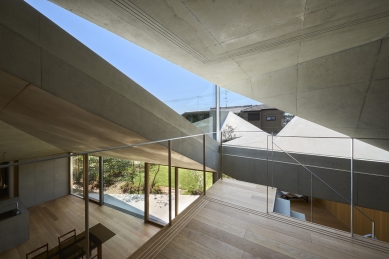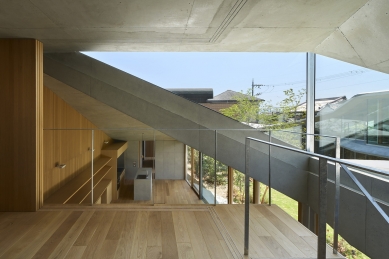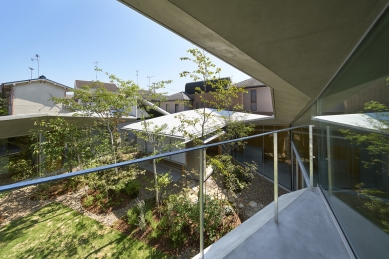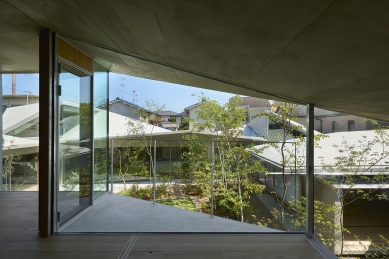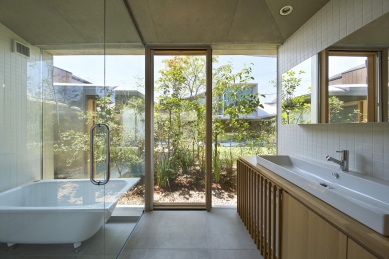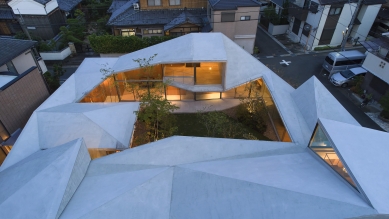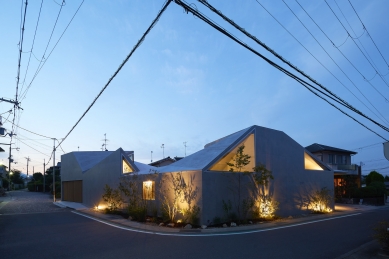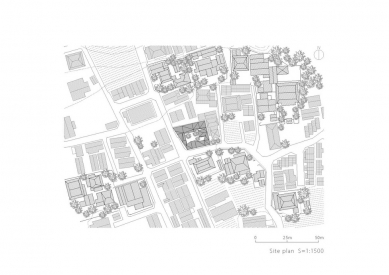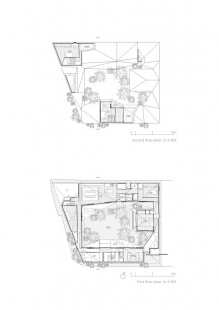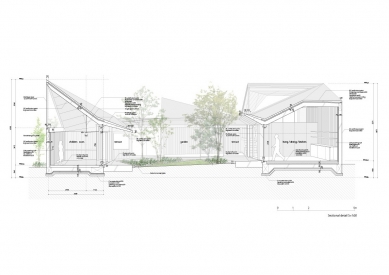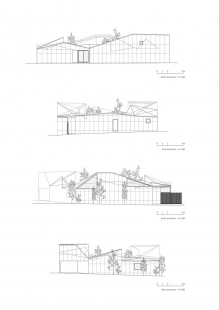
House in Maitamon
海外開発人材支援協会

This is a project to rebuild an old house in Muko City, in Kyoto prefecture. Farmland and bamboo forests spread surrounding the site. Since ancient times, the area has been delimited by stone walls and dotted with farm-style habitations, each consisting of a main house and a cluster of several other residences forming a single habitation. In recent years, due to the rapid urbanization in the center of Kyoto, many farm-style houses have been demolished and dismantled. The land has subsequently been subdivided into a patchwork of historical residences and new habitations irrespective of the history of the prefecture.
In planning a new residence in such a location, we thought that the challenge was how to overlap the two-time axes of living rooted in past history and modern times and create a new way of living that would ensure a balance between the two points of view.
Specifically, the are two elements that characterise the traditional farm-style house. Typically it’s a spacious living area that includes an open space and fields for agricultural work and farming, and an hierarchical cluster of buildings centered on the main house. These two features are rooted in local life and have a profound connection to its history.
On the other hand, in modern residential living, it seemed natural to dissolve the hierarchy centered around the main building of the farm-style houses and change it to the state of living of a series of neutral and free living spaces.
This led to a form in which small clusters of houses, which define the residence, are not connected hierarchically, as in the old farmhouse style, but rather collide and continuously melt into each other, enclosing a large living area as a whole. It could be defined as a Japanese-style courthouse derived from agricultural settlements.
By layering the unique way of living in this area with the history of villages centered on old farming and the modern way of living, this contemporary residence connects with the local tradition and is an attempt to expand the living space in recognition of the city.
In planning a new residence in such a location, we thought that the challenge was how to overlap the two-time axes of living rooted in past history and modern times and create a new way of living that would ensure a balance between the two points of view.
Specifically, the are two elements that characterise the traditional farm-style house. Typically it’s a spacious living area that includes an open space and fields for agricultural work and farming, and an hierarchical cluster of buildings centered on the main house. These two features are rooted in local life and have a profound connection to its history.
On the other hand, in modern residential living, it seemed natural to dissolve the hierarchy centered around the main building of the farm-style houses and change it to the state of living of a series of neutral and free living spaces.
This led to a form in which small clusters of houses, which define the residence, are not connected hierarchically, as in the old farmhouse style, but rather collide and continuously melt into each other, enclosing a large living area as a whole. It could be defined as a Japanese-style courthouse derived from agricultural settlements.
By layering the unique way of living in this area with the history of villages centered on old farming and the modern way of living, this contemporary residence connects with the local tradition and is an attempt to expand the living space in recognition of the city.
Tomohiro Hata Architect and Associates
0 comments
add comment


